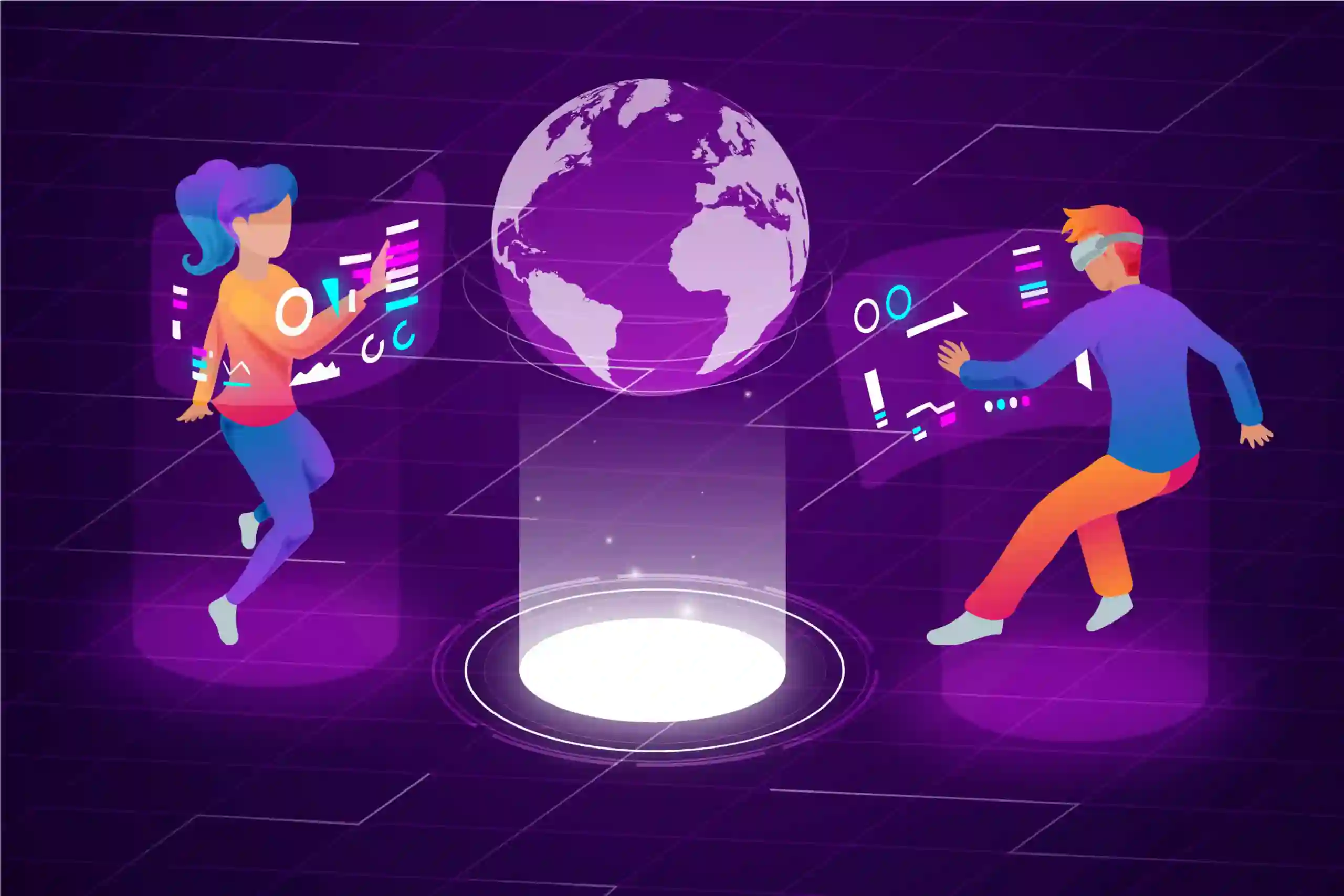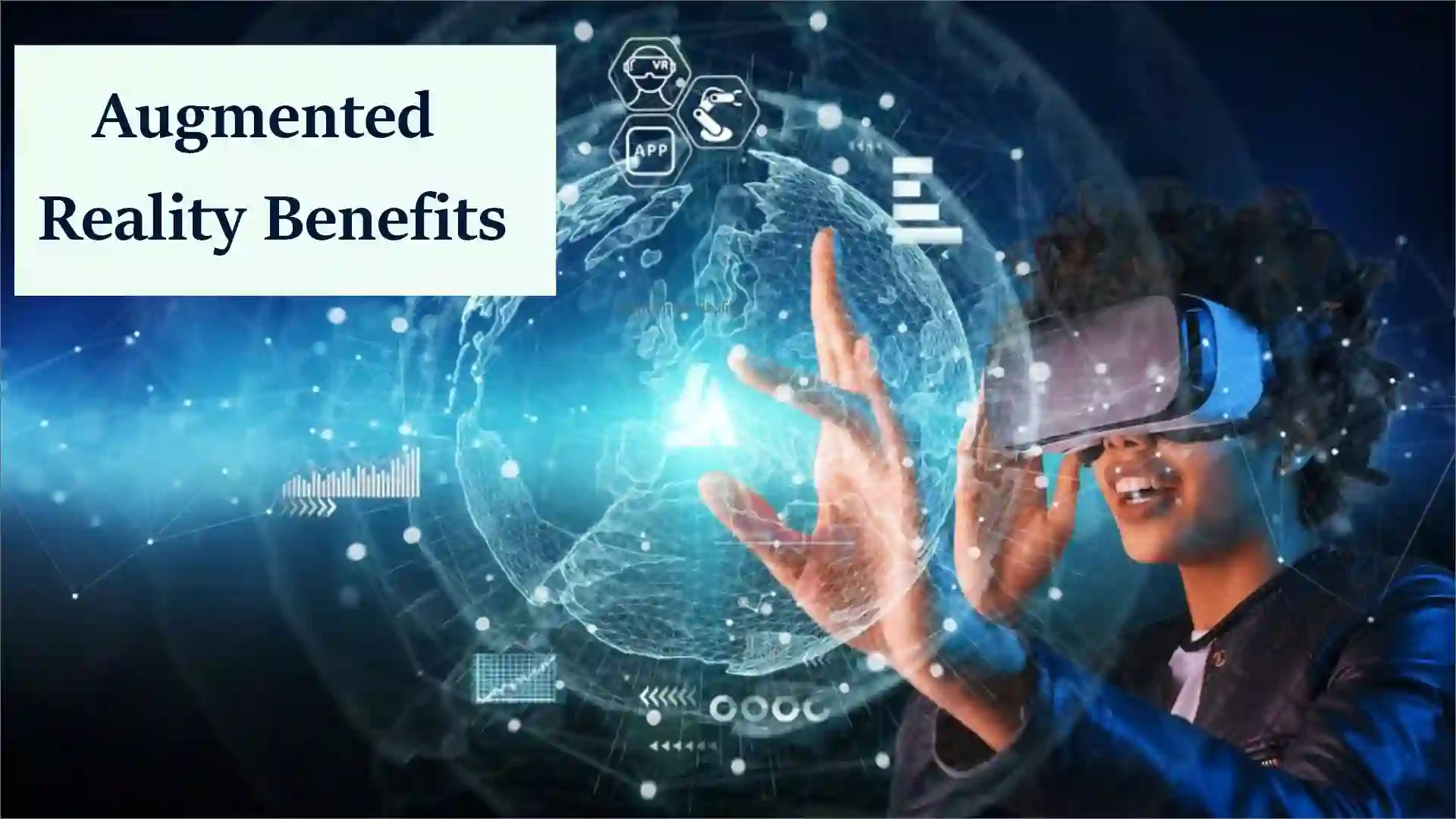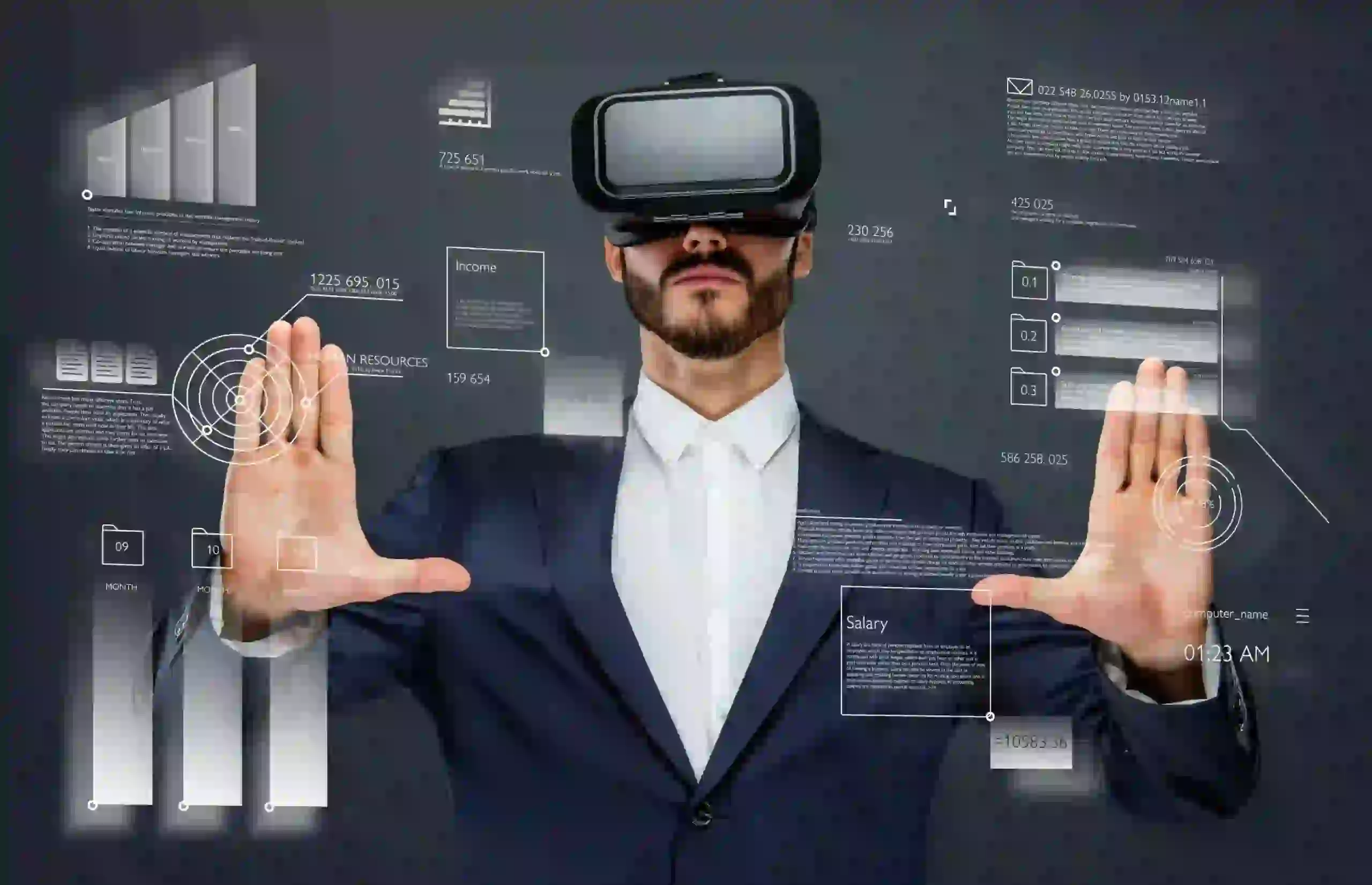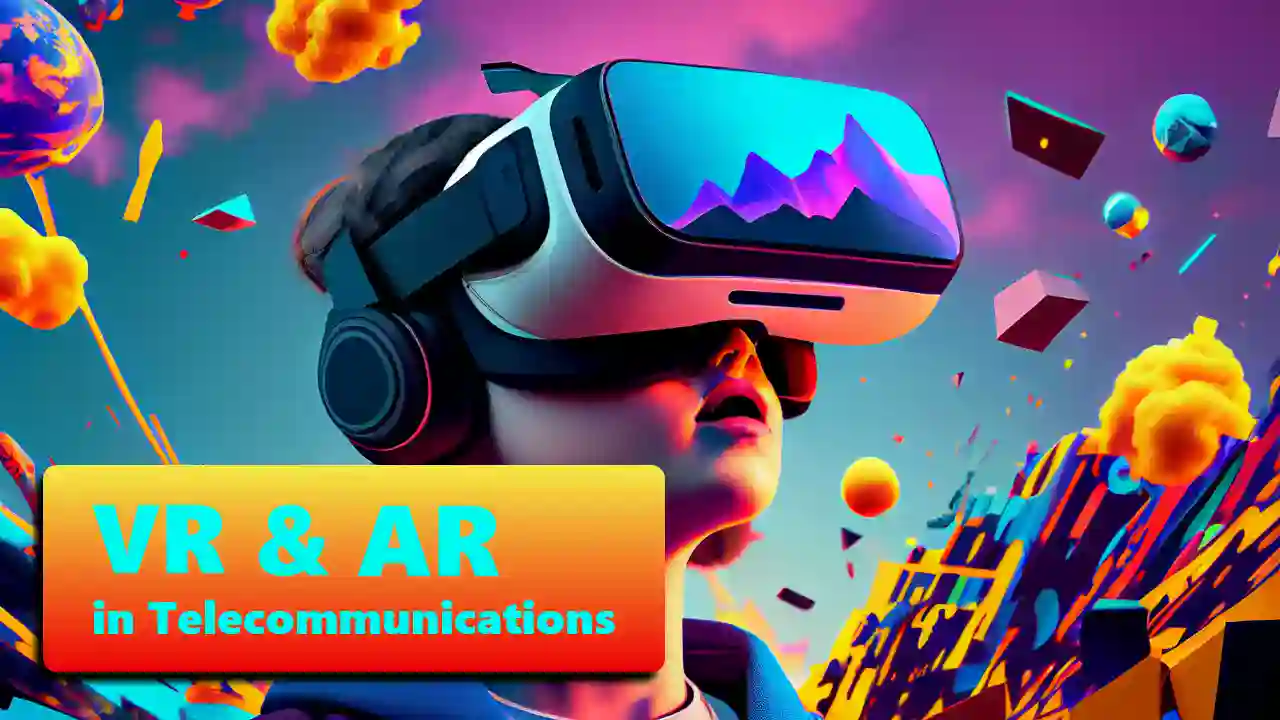The telecommunication sector is providing uninterrupted services across several businesses and helping them carry out their operations smoothly. In fact, telecommunication has become an integral part of today’s business world.
Virtual reality (VR) and Augmented reality (AR) are changing how we interact with technology. These immersive technologies are widely used in the entertainment and gaming industry, but their potential goes beyond.
In recent years, the telecommunication industry has been exploring the integration of VR and AR to improve customer services and experience. Moreover, these technologies have the potential to simplify and speed up business proceedings such as employee training and field service management.
VR and AR have the potential to become the largest platforms and transform how consumers interact with the physical world and how businesses run operations.
In this article, we will explore VR and AR, their potential application in telecommunication, and the impact they can have on the industry.
What Is Virtual Reality?
Despite being a technology that emerged decades ago, many people are still unaware of virtual reality and also confuse it with augmented reality. Virtual reality is the use of computer technology to create a simulated environment.
It places you in a three-dimensional experience and has scenes and objects that appear to be real. With this technology, the user will be immersed in and interact with the 3D world instead of seeing a screen in front of them.
Virtual reality has grown beyond entertainment and has become an important tool in science, commerce, education, telecommunication, and more.
What Is Augmented Reality?
Augmented reality (AR) is a real-time use of information in the form of graphics, audio and text, and other virtual enhancement integrated with real-world objects. This real-world element is what makes AR different from virtual reality.
Augmented reality integrates and adds value to the user’s interaction with the real world versus simulation.
Retailers and other businesses can use this type of technology to promote services and products, collect unique data, and promote marketing campaigns.
Integration Of VR And AR In Telecommunication
VR and AR can be integrated into telecommunication in different ways. For example, AR can help to overlay digital information in the real world and provide a more informative and interactive customer service experience.
On the other hand, VR can provide a simulated environment for remote training and collaboration. So we can say that integrating VR and AR into telecommunication has the potential to create a more immersive, seamless, and intuitive user experience.
The adoption of these technologies can help telecommunication companies significantly improve the quality of their services.
Potential Applications Of VR And AR in Telecommunication

Augmented and virtual reality creates new ways of interaction using graphics and gestures that are highly intuitive to human beings.
Here are a few potential applications of VR and AR in the telecommunication industry:
1. Remote Collaboration And Training
With the help of VR technology, employees can connect and collaborate in a simulated environment. It provides a more effective training experience. For example, engineers can remotely test and troubleshoot issues in the network using VR headsets and significantly reduce downtime and cost.
2. Customer Service And Support
Augmented reality helps you in providing a more interactive customer service experience. For example, it allows customers to use AR-enabled devices to scan their equipment and receive step-by-step instructions to fix and troubleshoot issues. It helps in reducing customer wait time and improving the quality of service.
3. Virtual Conferences and Events
After the COVID-19 pandemic, virtual conferences and events have become increasingly popular. Virtual reality can enhance such events by providing a more immersive and engaging experience enabling participants to interact with each other in a simulated version.
It helps reduce the cost of traveling to conferences or meetings out of the city or country. You can connect to your clients or team members no matter where you are.
4. Improving Work Infrastructure and Maintenance
As we know, VR works by creating simulated environments, and it can simulate the installation and maintenance of network equipment. This approach is helpful in reducing the time and cost associated with physical testing.
How Can AR Benefit the Telecommunication Industry?

Here are a few benefits that help you understand how augmented reality is transforming the telecommunication industry:
Enhanced Field Service Management
Field technicians in the telecommunication sector have to deal with complex network problems and are responsible for providing appropriate solutions. It is extremely difficult and time-consuming to manually detect and fix these issues in the network and equipment.
The integration of AR in telecommunication can bring relief to field technicians. It can help them detect issues and draw an accurate timeline for repairs.
Furthermore, it allows them to scan different elements of various machines. Employees can also take AR VR training to uncover the applications of this technology.
Extracting Equipment Information
According to augmented reality, experts’ AR headsets can extract essential data about any equipment which embeds QR markers. Users can scan the respective QR code through AR-powered headsets or smartphones to access instruction manuals, specification details, and other data.
With this type of solution, telecom companies can train their staff to use new equipment efficiently. In addition, they can access AR content to get whatever information they need about the equipment.
This way, telecom companies can train their staff on a wide range of machines without putting much effort and extra time.
Perform Remote Support
Sometimes it happens that field technicians need to connect with experts to resolve an issue. However, it is time-consuming as they cannot connect with experts immediately, and telecom companies must provide an efficient solution for this problem.
With the implementation of AR in telecommunication, field technicians can set up 2-way audio or video sessions with the experts.
With the help of such sessions, experts can instantly detect issues in the network in real time. Hence experts will be available throughout the monitoring and repairing process.
Regular Auditing
AR-enabled devices allow telecom businesses to perform regular audits of equipment or network. Moreover, staff can easily record equipment’s performance and detect faults using a comprehensive checklist.
Inspectors can also use AR headsets to access updated data and guidelines to perform an effective audit. Data collection within AR headsets can also generate a well-maintained audit report. Hence, AR can help telecommunication companies streamline their audit process.
Record Creation
Businesses can use multiple AR applications to make checklists and collect useful information during inspection. It ensures that the inspection process includes each important step and records all the steps completed in real-time.
This way, telecom companies can generate informative records related to inspection tasks. Furthermore, AR is a centralized approach, so telecom companies can use local devices to save generated record logs.
Case Studies VR And AR In Telecommunication
Many telecommunication companies have implemented VR and AR technologies to improve their services. For example, Vodafone has developed an AR app that allows customers to point their smartphones at products to receive additional information about them.
Ericsson is also using VR to train engineers in its factory, reducing training costs and increasing efficiency.
Challenges And Limitations

Although the implementation of VR and AR in telecommunication brings numerous benefits, it is not without challenges and limitations. Technical issues, such as bandwidth and latency, need to be addressed for the effective performance of these technologies.
Security and privacy concerns such as data authentication and protection must also be considered. Furthermore, cost and accessibility can also be barriers for small companies.
Future Outlook
As virtual and augmented reality are technologies that continue to evolve, the potential for new applications will increase. Due to the benefits of these technologies, more and more companies are adopting them.
Thus the future of VR and AR in telecommunication looks promising in telecommunication with new use cases and improvements in customer experience.
Conclusion - Virtual Reality and Augmented Reality
Virtual Reality (VR) is a computer technology that creates a simulated environment, while Augmented Reality (AR) overlays digital information onto real-world objects. The integration of VR and AR in telecommunications has the potential to revolutionize the industry, providing new and innovative solutions to improve customer service and support, training, and network maintenance.
Potential applications of VR and AR include remote collaboration and training, improving customer service and support, virtual conferences and events, and improving work infrastructure and maintenance.
Despite the challenges and limitations, adopting these technologies is expected to continue to grow. As VR and AR technologies continue to evolve, the potential for new applications in telecommunications will increase, opening up exciting new opportunities for the industry.
Read More: Future of VoIP Technology in 2022
Read More: Advantages and Disadvantages of Virtual Meeting 2022




